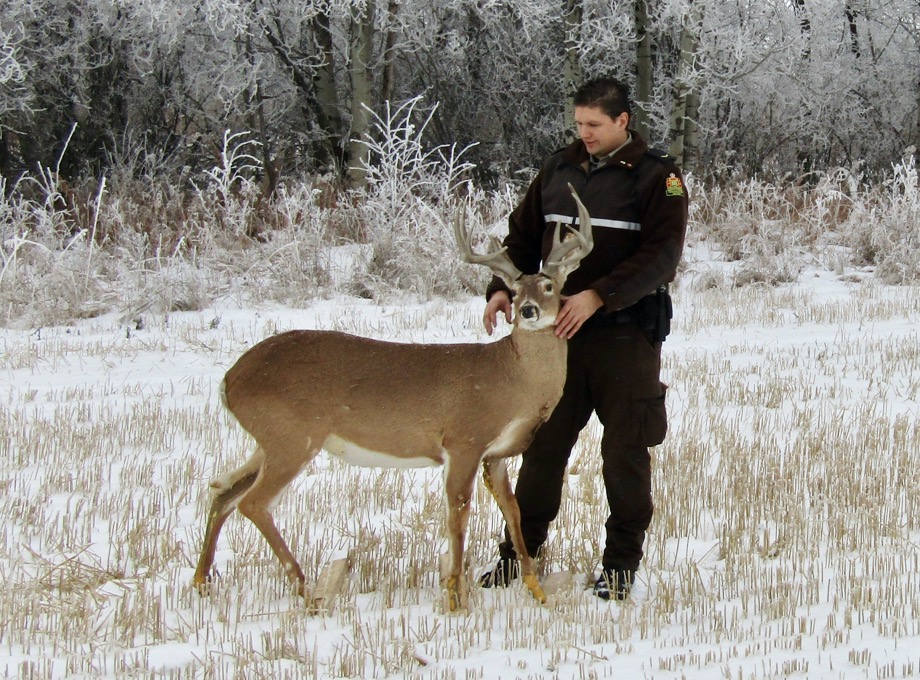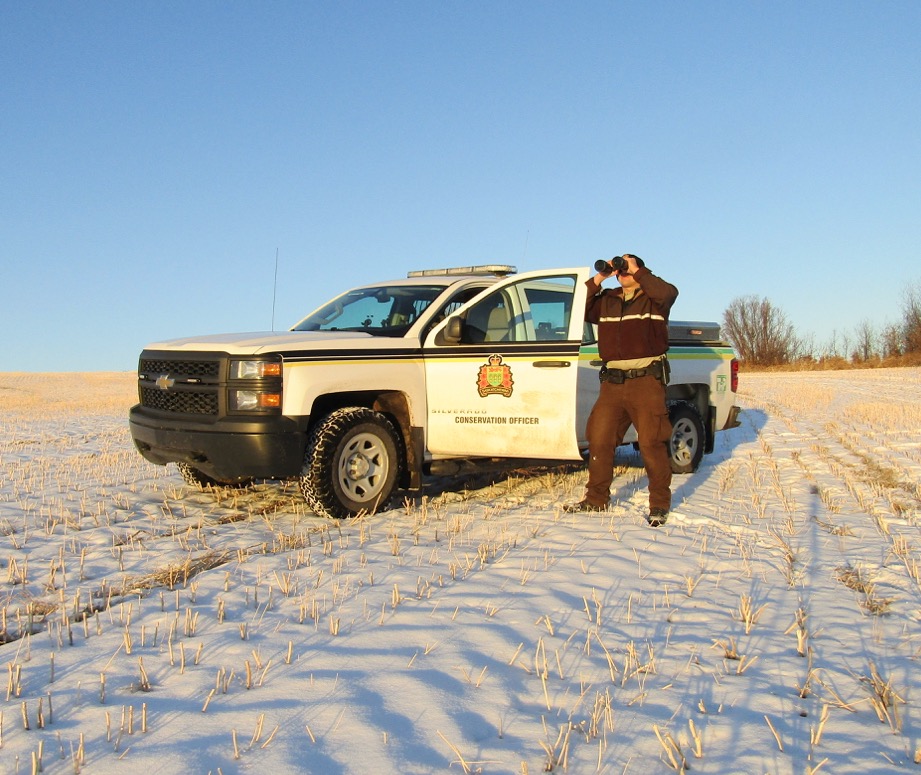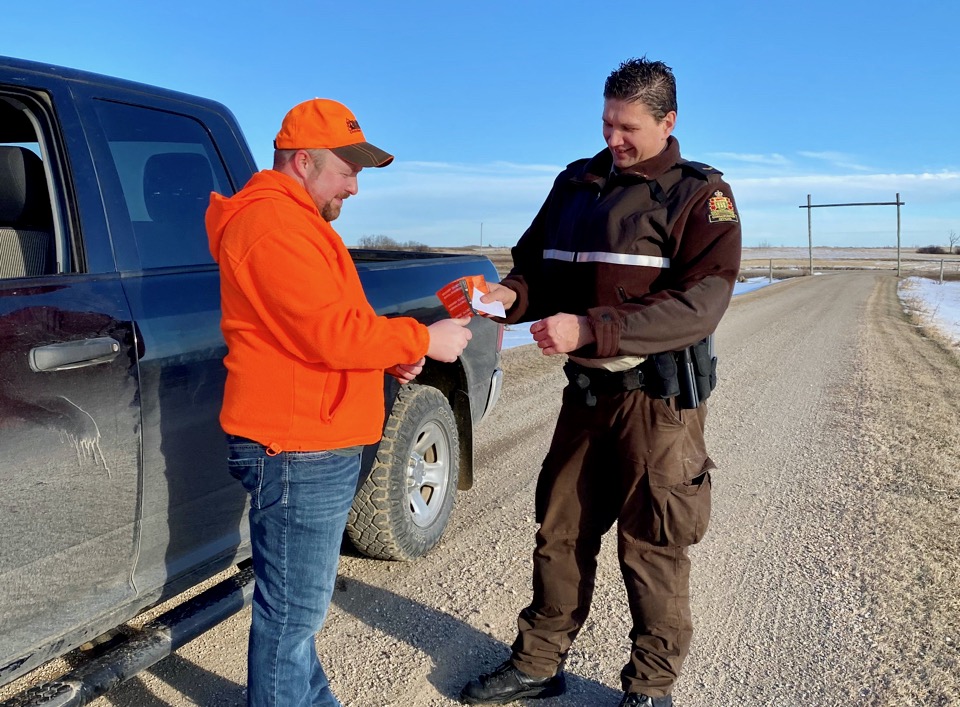Hunting for bad apples
Three revealing days in the life of a conservation officer during Saskatchewan’s busy deer-hunting season
Advertisement

I don’t have any special pre-season traditions like some officers do. I did want to get a handful of things done at home first, however, knowing I would have very little time once the season started. I went to the grocery store and stocked up on groceries to make lunches to eat in the patrol truck. I also bought special snacks such as pepperoni sticks, nuts, potato chips, chocolate bars and cola (patrol truck snacks aren’t always the healthiest). Then I did all my laundry so I’d have clean uniforms ready to go. It sometimes only takes loading one deer in a truck to turn a freshly cleaned uniform into a blood-stained mess.
Finally, I also tried to clean up our house a little. My wife and I both work, and the only time to get housework done is in the evenings after a busy day. I knew I wouldn’t be much help to my wife for a little while, so I tried to do what I could. Despite my good intentions, I knew the house would likely turn into a mess again in no time—we have children now aged three and six, and they can quickly create some pretty accurate tornado reenactments.
Advertisement
In Saskatchewan, hunting time begins a half-hour before sunrise and ends a half-hour after sunset. During the earlier hunting seasons, such as September’s rifle season for elk, hunting could start at 5:50 a.m. or earlier. During the rifle deer season, however, sunrise comes much later. On the November 15 opener last year, it started at 7:36 a.m. in my area. While it’s nice to not have to get up in the middle of the night to start work, my alarm was still set every day for 5:30 a.m., giving me an hour to get ready and geared up to start work at 6:30.
On that first day, my partner and I set up the deer decoy as planned. Throughout the day, only lawful, respectful hunters drove by. That was awesome to see, even though we were hoping to catch some law-breakers. Forty-five minutes after sunset, we finally decided to take down the decoy because it was too dark to see it in the field.
Every situation is different, but there is no room for officer discretion involving safety-based offences
It seemed we wouldn’t be encountering any violations that day, but I was wrong. Just then, we heard gunshots ring out from less than two kilometres away. Here we go, I thought. Someone’s shooting at night. I took off in the direction I heard the shots and soon encountered the subject’s vehicle. Not only did he shoot well after dark, he also fired right by someone’s residence.
Advertisement
In Saskatchewan, you can’t shoot within 500 metres of occupied buildings without the landowner’s permission. The hunter claimed he didn’t know the house was there until after he had shot, revealing one reason why it’s illegal to shoot at night. It’s one thing to break laws that are put in place to ensure fair chase and the humane dispatch of game, but it’s quite another to break laws that are meant to keep both hunters and the public safe. When you shoot in the dark, you don’t know what is out there.
Every situation is different, but there is no room for officer discretion involving such safety-based offences. With that, I issued the shooter a $580 fine for hunting at night and a $460 fine for shooting within 500 metres of an occupied building. I also seized his rifle for evidence, and once convicted, he would lose his right to purchase a hunting licence for one year. Those were significant penalties, yes, but his actions were a significant safety risk. And so ended day one of the 2019 rifle deer season.
For our decoy operation on the second day, my partner and I headed to a different location 20 kilometres to the north. We had originally planned to set up there for the opener, but the “No Hunting” signs posted by the landowner had been torn down. Now he had fresh signs up, however, so we were good to go. We got set up and halfway through the morning—boom!—a shot rang out, hitting the decoy. We responded immediately, rushing in for the takedown with the red and blue lights flashing on our patrol trucks.
That afternoon, we cancelled our plan for another decoy operation at a different location when officers who were helping us received a tip that two moose had been poached on some farmland. You can plan and plan, but the poaching of other species doesn’t stop just because deer season is on. The caller said the poachers were cutting up and loading the moose as he spoke, then he took pictures of their trucks and sent them to us. It was all hands on deck at that point to catch these guys.
I can’t stress enough how the help of responsible citizens is both crucial and appreciated. It contributes significantly to apprehending suspects. Acting on the tip, two officers went right to the scene hoping to find the poachers, while another officer headed north in case he could intercept the subjects on their way home. I covered the area to the east of the violation in case the poachers tried to escape that way.
The help of responsible citizens is both crucial and appreciated, and contributes significantly to apprehending suspects
I would love to have a great story about how we caught and fined the poachers, but sadly, that’s not how it played out. The violators obviously saw the complainant taking pictures of their trucks and high-tailed it out of there before the officers arrived. The other COs and I didn’t encounter them on the road, either. And unfortunately, the caller on the tip line didn’t get the poachers’ licence plate numbers. Otherwise, we could have confronted them at their homes. All we could do was hope for some luck, but it didn’t come, which is really too bad. It doesn’t get much worse than poaching two moose on private farmland.
I spent the remaining few hours of the day checking hunters for deer licences and firearms compliance. After the discouragement of the moose poachers getting away, it was uplifting to talk to good, responsible hunters about their experiences that day.


